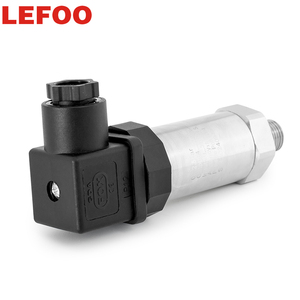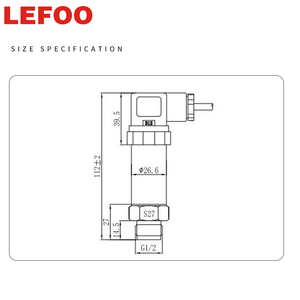
All categories
Featured selections
Trade Assurance
Buyer Central
Help Center
Get the app
Become a supplier

(1073 products available)


















Electromechanical Pressure Switch
The health club pressure switch is a simple electromechanical device. Set pressure variations instigate the opening or closure of an electrical contact. It generally consists of a pressure transducer, an electrical actuation system, and a return mechanism. This switch's primary task is to limit or allow a certain pressure range in a system, operating widely in various industries like oil and gas, automotive, and HVAC. In these systems, the electromechanical pressure switch is critical for safety, as it prevents over-pressure situations by shutting off or opening a circuit depending on the pressure condition.
Solid-State Pressure Switch
A solid-state pressure switch is favored for its durability and longer life span. Unlike mechanical switches, solid-state pressure switches do not have any moving parts. They use electronic sensors like piezo-resistive or capacitive sensors to detect pressure. These types of pressure switches, which offer faster response times and higher accuracy, are especially valuable in sectors such as semiconductor manufacturing and medical devices, pressure ranges where reliability and precision are paramount. The absence of mechanical wear means these switches can withstand great pressure cycles without performance degradation.
Differential Pressure Switch
The differential pressure switch is designed to monitor and respond to the difference in pressure between two points in a system. It is instrumental in applications where the pressure differential is a critical factor, such as filtration system monitoring and fluid flow in pipelines. This switch engages an electrical output when the pressure variation exceeds a preset threshold, thus ensuring the system operates within safe limits. The differential pressure switch is crucial in predictive maintenance, helping avert equipment failure by signalling conditions that require immediate attention.
Adjustable Pressure Switch
The adjustable pressure switch allows users to modify the preset pressure levels according to specific application requirements. It features adjustable set points for pressure and hysteresis, providing flexibility for varying operational needs. It finds wide acceptance in sectors like manufacturing and process industries, where pressure requirements can change. This variety helps optimize system performance and ensures the adjustable pressure switch caters to diverse user needs, thus enhancing versatility in multiple industrial settings.
Materials with Different Pressure Ranges
Monroe pressure switches are primarily built with high-quality materials to endure elevated pressures. The pressure switch's body is generally made from heavy-duty aluminum or stainless steel, competent enough to handle extreme pressure variations and, at the same time, retain structural integrity. Internally, the components may have brass or contemporary materials like ceramic or polymer composites, which are strong enough to withstand the increasing pressure and prevent wear due to friction or corrosion. These switches are engineered for specific pressure applications, emphasizing robustness and longevity.
Water and Dust Resistance
A monro electric pressure switch is specifically conceived for harsh environmental conditions. The enclosures for such switches feature waterproof materials such as silicone and rubber to alleviate water penetration in the internal components. Moreover, dust ingress may cause severe damage, so protective features such as dust covers or seals are standard. Some pressure switches are intended to resist not only water and dust but also chemical agents, including acids and bases. This requirement is critical for industries such as mining or chemical processing, where exposure to hazardous materials may be detrimental to equipment functionality. Ensuring resistance against water, dust, and chemicals enhances switch durability, allowing continuous reliable operation in tough environments.
Heat Dissipation and Long-Lasting Performance
Continuous operation of pressure switches under high load conditions often leads to considerable heat generation. A properly designed Monroe pressure switch should possess excellent heat dissipation capability to prevent internal component damage. Materials like aluminum are incorporated, along with the design features like cooling fins to transfer heat quickly from the internal system to the external environment, which minimizes the likelihood of heat-related failures. In addition, high-quality materials used in a pressure switch may retain its integrity and functionality even under extreme temperatures, thus ensuring long-lasting performance and high reliability in applications ranging from industrial machinery to aerospace systems.
Automotive Industry
A Monroe pressure switch is conveniently applied in the automotive industry. It is used extensively for monitoring the pressure in key fluid systems, including oil, fuel, and transmission fluids. This switch makes sure that the pressure in these systems stays within the correct range. If it drops below or rises above that range, it triggers alerts to the vehicle's onboard computer system. Early identification of any potential issues helps prevent system failures and prolongs the switch's reliability and longevity. Hence, these pressure switches improve vehicle performance, increase safety, and reduce costly repairs.
HVAC Systems
Monroe pressure switches have a vital function in commercial heating, ventilation, and air conditioning (HVAC) systems by regulating refrigerant pressure within the system's components. They help maintain peak energy efficiency and system safety by enabling compressors to perform appropriately and preventing overpressure situations. In such cases, failure to do so may result in system breakdowns or energy inefficiency. Besides, regular monitoring through these pressure switches is helpful in predictive maintenance. Thus, pressure switches find wide application in commercial HVAC installations.
Industrial Machinery
A Monroe electronic pressure switch is extremely crucial in industrial applications where it controls compressed air or hydraulic fluid systems. In these high-pressure environments, such pressure switches are responsible for maintaining pressure levels within the desired range and, as such, protecting equipment from overpressure situations. Beyond protection, these switches help improve operational efficiency. In most cases, their constant feedback is used by control systems to optimize fluid power system performance, thereby reducing energy consumption and minimising downtime in industrial machinery.
Oil and Gas Industry
In the oil and gas industry, a Monroe pressure switch protects equipment and ensures operational safety. These switches monitor the pressure of gases and liquids transported through pipelines and identify any pressure imbalance, which could mean a fault, leading to immediate corrective action. This way, the switches prevent potential disasters such as explosions or leaks. These pressure switches can operate under extreme conditions, thus ensuring reliability in hazardous environments. With such features, these switches become critical to maintaining safety and, consequently, operational efficacy in this risky yet vital energy industry.
Compatibility with System Requirements
Choosing the right pressure switch requires an understanding of how to relate pressure switch functionality to one's system. The operating pressure range of the switch should be compatible with the system's requirements. In that case, a Monroe analog pressure switch is ideal for systems that need constant pressure regulation, while mechanical systems can do without. Further, consider the medium in which the switch will operate to guarantee material compatibility. Thus, this means that a switch designed for gases will not be as effective in liquids. Moreover, the switch's electrical rating must align with the system's control circuit to ensure operational safety and efficacy.
Response Time and Accuracy
Monroe pressure switches are distinguished by their efficiency in pressure regulation. However, the need for precision can only be adequately addressed by picking a switch with the proper response time given system dynamics. Fast-changing systems require pressure switches that respond promptly to pressure variations, while those with slow dynamics can work just fine with lower response times. Thus, choosing a pressure switch that meets or surpasses the application accuracy requirement is critical. In that case, the switch could avoid significant errors that may cause system inefficiencies or even failures. Therefore, evaluation of these parameters ensures that the selected pressure switch will continuously perform under nominal conditions.
Environmental Conditions & Durability
The longevity of a pressure switch is critically influenced by the environment in which it operates. For this to happen, consider any environment's temperature extremes, humidity, and presence of corrosive substances or dust. Pressure switches intended for outdoor or hazardous environments usually come with protective enclosures and with seals made of premium materials fixed into them. Also, high-quality materials that make up the pressure switch, like stainless steel or brass, should ensure very good resistance to wear and tear. Thus, these factors greatly determine the durability of the pressure switches and their ability to maintain reliable performance over time in various industrial applications.
Cost vs. Performance
Cost is an important criterion when selecting a pressure switch, especially since performance is not to be sacrificed. Initial replacement investment cost might be low; that does not account for long-term operational expenses. For instance, cheaper switches might need frequent replacements or could be less energy efficient, leading to greater costs over time. One must evaluate the total cost of ownership and over time to make an informed decision truly. Often, premium switches have comparatively higher upfront costs but are much more reliable and efficient, which reduces their total cost across their entire lives and makes them more desirable for the industrial business application in the long run.
A. Yes, Monroe pressure switches designed with protective enclosures and weather-resistant seals can effectively function in outdoor environments.
A. By regulating pressure within safe limits, preventing overpressure situations, and providing early warnings, thus protecting systems from potential failures.
A. While they are durable, regular inspection and servicing in extreme environments can ensure continued reliability and performance.
A. They are commonly constructed from stainless steel, brass, and high-grade plastics to ensure durability and resistance to adverse conditions.
A. Yes, they can be tailored to fit unique pressure ranges, electrical configurations, and specific environmental considerations for various applications.